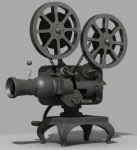
In the article, "A Developer's Guide to Presentations", there were broad paint strokes which focused on the facets of a presentation. These tips varied from the preparation, to the presenting, to how to interact with an audience. Although this was an excellent discussion, a larger truth presented itself. There are two sides to any great presentation: a prepared presenter and how his/her information is presented. In modern day presenting, this is in reference to the Powerpoint built for the presentation. Unfortunately, this is a commonly overlooked area. A distracting presentation can have unintended consequences on the power of its content. A Powerpoint presentation should not look like a yard sale. It's important to remember the natural pattern recognition within all people. Small problems or inconsistencies can drive a wedge between the presenter and viewer, breaking the flow of information. The following sections outline various tips for developers for building a high performance Powerpoint presentation.
Stay away from the edge!
Refrain from placing information near the edge of slides. The resolution of a projector or presenting computer may cut off information. Additionally, some projectors present beyond the bounds of the screen. This can also result in chopped information.
What does that say?
Choose a font style and size that is appropriate for the audience. Most viewers will be reading from a distance. Presentations can look deceptively adequate on smaller form factors.
No paragraphs!!
Use graphics, bullet points, or short sentences to convey information. Short bursts of information are better. Each time a user soaks in information, he/she must temporarily zone out the presenter. Let's keep these moments as short as possible. Keep information on slides to a minimum. Talk through the points instead of writing them out. A Powerpoint is a presentation aid, not an encyclopedia.
Stop crowding me!
Don't overcrowd slides or presentations. This can have the same information overload as the introduction of paragraphs. The less slides and content per slide, the better. Simply having too many slides can present its own distraction to a viewer. Don't use five words when three will do.
What projector?
Don't forget about projector fidelity. There is a broad range of quality with projectors. To combat this, use backgrounds colors and text colors with high contrast. Most projectors are also not very good with subtle gradients.
Choose animation wisely!
This was mentioned in the previous article as well, but it's worth revisiting. Animations within a powerpoint can be the single biggest distraction for viewers. As a general rule, avoid them. If they are used, they should be subtle and non-obtrusive. Having a spinning animation on every bullet point is an example of a distracting presentation.
Stay consistent
Maintain consistency throughout all slides. Use a pre-built or company provided theme. Stay within the confines of the theme. Deviations from the theme will be a noticeable distraction to viewers.
Stop the music!
Use music sparingly. Audio can be unreliable and may not have the intended effect due to presentation limitations. Most presenting computers cannot broadcast audio to an audience.
Give me a break!
Break up text with other forms of rich content. This can include but is not limited to charts, graphs, pictures, diagrams, etc. Separating data provides short pauses for the brain to digest information better.
Handing over a presentation
In some instances, a Powerpoint presentation may need to be handed over to someone else or it may be provided to audience members. In these situations, it's important to review the overall size of the presentation (MBs) and what the presentation looks like when printed.
Review, Review, Review
Ask an objective third party to review the presentation for spelling/grammar mistakes and content concerns. Ask them to point out any distracting areas or information. If possible, provide the exact constraints that will be used in the actual presentation. For instance, display the presentation on a projector to receive the full effect.
CodeProject




